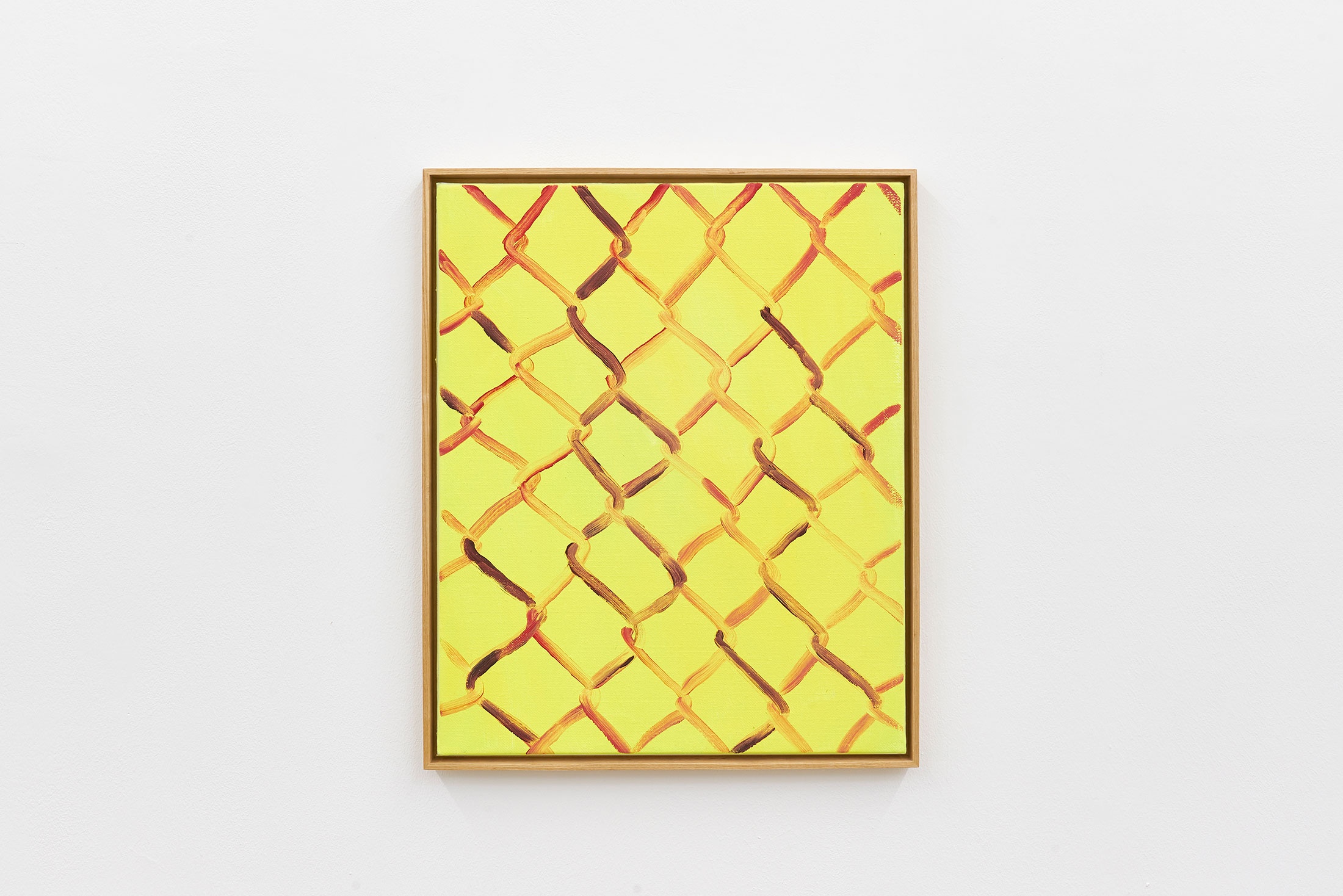Gregory Olympio

In Paysage Grillage, an ongoing series of seemingly abstract studies, Olympio reimagines ubiquitous chain-linked fences (the grillage of the title) as compositional device. Line, pattern, form – however flatly two-dimensional – the fence, reduced to image, offers observations on space and its boundaries, both in the world and on canvas. That the artist titles these studies ‘landscape’ (paysage) extends reflections on how such boundaries have come to shape urban spaces. That he sets his fences against flat planes of colour suggests his preoccupations are largely formal. Notice these boundaries, the artist proposes, but notice them differently – for their rhythm, the shade of their rusted wires, the machined regularity of each twist.
b.1986, Lomé
Much is made of Gregory Olympio’s cross-cultural upbringing as a conceptual shorthand for reading his spare compositions. Yet while such biographical notes perhaps lend themselves to the artist’s preoccupations with boundaries, Olympio suggests his considerations are primarily formal. “My work has always been about the line, the limits...the line between the two parts of the paintings is important.” To this, his paintings are often composed as diptychs and more often feature two figures, inviting the doubling effect of pictorial division. Compositions recur across canvases, the continuity of iteration allowing the artist to “introduce as little intention as possible.” That the artist cites “attitudes” as his guiding theme further suggests that his national identities – Beninese, Togolese and French – are more incident than apparent. The figures that populate Olympio’s paintings have no single origin, composed from composite impressions of people seen on the street, in magazines and online. They are ambiguous, fluid; vessels of feeling, of attitudes, rather than identity.
